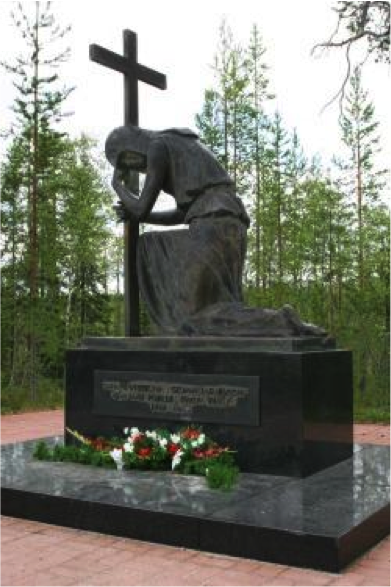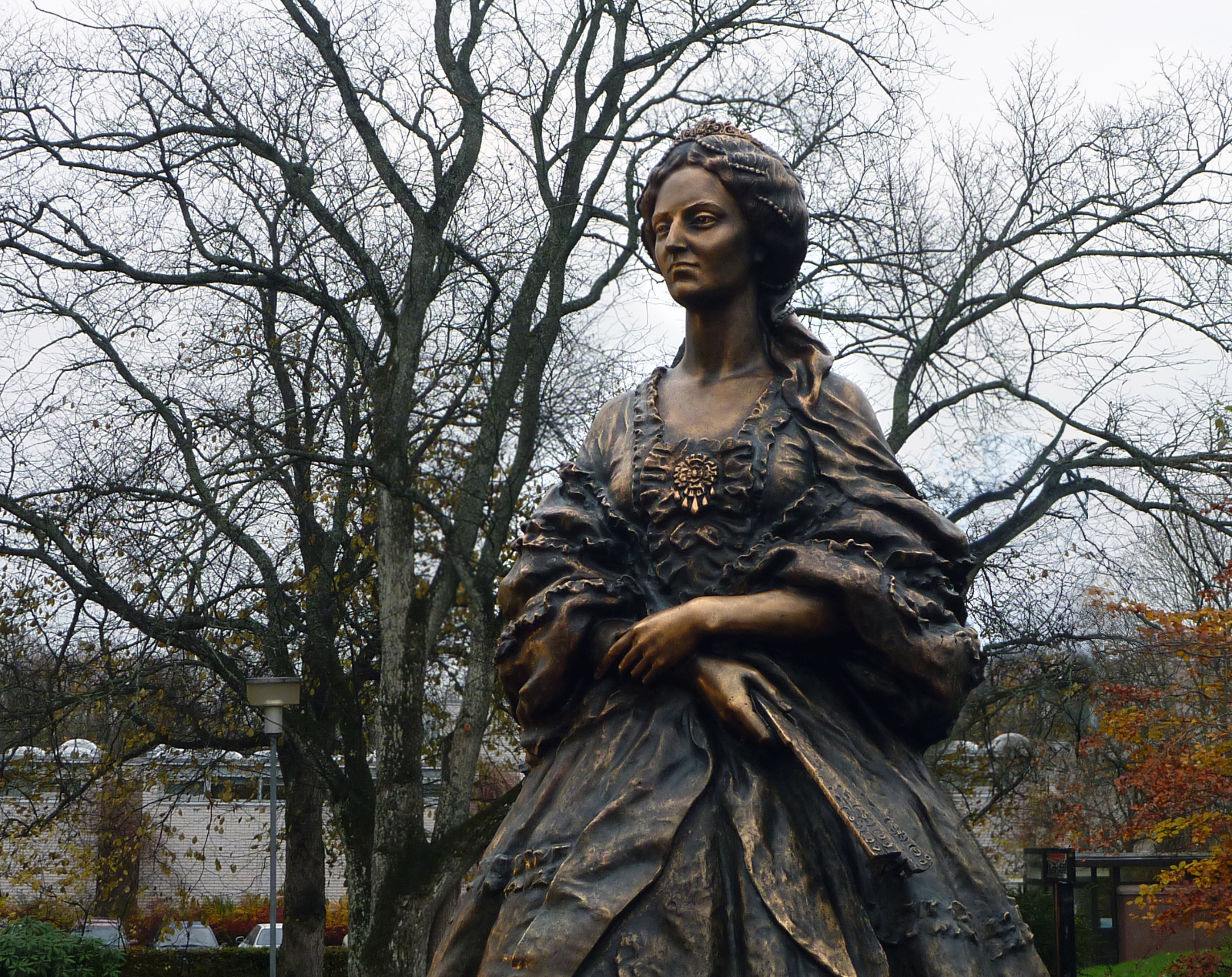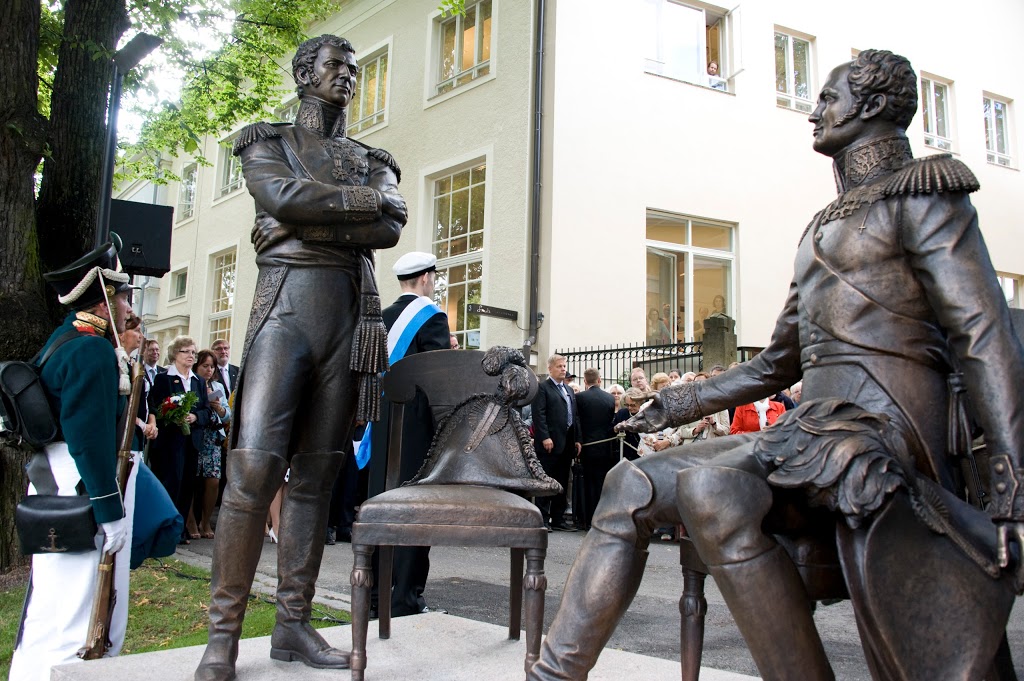By: Alexander Belov
The first publicly available monument established in Finland is directly linked to Russia
Each monument has its own fate like any human. Some may survive it comparatively easily and be admired for a long time. Others are not so lucky. They are frequently relocated or even removed. Sometimes mute monuments can face longstanding rancour.
In 1992 Mr. Ageev, our Consul on the Aland Islands, called me (at that time I was the Vice-President of the “Russia – Finland” Society) and told me that, upon dissolution of the USSR, a monument in honour of Russian sailors, whose dumping of 1742-1743 was found in Tranvik community during road repair, had failed to be erected. Due to the very small cost, our Society immediately paid for the monument. We agreed to open it in the autumn, during ‘Russia Days’ on the Aland Islands. Preparations were supported by Mr. Deryabin, our Embassador to Finland.
The monument was unpretentious by any standard but its opening attracted all the Aland celebrities and the sparse Russian community. When it was my turn to make a short speech, my breathing seized-up. Time almost turned back. Maybe it was the first moment that I realised that monuments act like sentries for the memory of generations, specific milestones and markers of time. How could I predict then that a huge part of my life would be related to monuments and their organization.
ALEXANDER PAVLOVICH’S PORTRAIT SCULPTURE
It is interesting that the first public monument established in Finland is directly related to Russia. The monument is located in the very heart of Helsinki but it is hidden from sight. It reflects the various periods of relations between the two countries. This portrait sculpture of Alexander Pavlovich is an acknowledgement of the support provided by the Russian emperor during the construction of a new building for the Royal Academy of Turku.
The portrait sculpture was ordered in 1814 from the famous Russian sculptor Ivan Petrovich Martos who was the creator of the Monument to Minin and Pozharsky (which is located in Red Square and which had been in the school hall of the Academy). The emperor is depicted wearing a gown and a crown of laurel on his head. The following text was engraved on the socle: Alexander I. Patriae et Academiae Pater MDCCCXV – Effigiem musae servant It fama per orbem (“Alexander I. A father to the Motherland and the Academy 1815 – Muses protect the monument, glory is everywhere”).
In 1827, following a fire which virtually destroyed the older capital, the sculpture arrived in Helsinki, the capital of the Grand Duchy of Finland.
The Chief Architect of Helsinki Karl Engel, who was well-known to St. Petersburg inhabitants for his Senate Square buildings, designed and managed the construction of a new building for the University. The emperor Nicholas I issued an order to name the University after the Emperor Alexander I. The school hall was specially designed according to the Saxon style in preparation for the statue of Alexander.
There followed years of admiration for the statue of the emperor Alexander The Blessed. The misfortune that would befall the monument was still in the future.
The situation changed at the beginning of the last century, especially following the independence of Finland, when relations between the Grand Duchy and its parent state became more sensitive. During celebrations they tried to hide the statue behind decorations. But nationalistically-oriented students requested the removal of everything which related to the Russian period of Finland’s history. They also started to attack the sculpture. The words of the monument which incited the students the most were those which called the Russian Tsar “the father to the Motherland”. In 1929 they tried to paint over the text on the plinth with tar. Two years later they applied acid to it.
Finally, it was decided to move the sculpture into the University. It is interesting that the relocation of the statue saved it from an air bomb in 1944.
The sculpture continued its travels. First, it was put in an area in the Historical Museum yard. In 1957 it was returned to the University and installed behind the cast-iron fence of the University library. Here Martos’ creation, which was intended for an indoor premises that would have been hidden from all, might deteriorate over the following 50 years. In 1967 the text was restored. But several years later the sculpture was relocated to the room for “conservation”; away from the possibility of corrosion and other serious problems. But things turned out well: the sculpture was renovated and placed in the University museum. A new copy was to be made and, in May 2014, to be erected in Turku at its original place. By this time the city had obtained one more monument to the Russian emperor.

MONUMENT OF ADORATION AND PROTEST
Only 100m away from the statue of Alexander I, there is another monument in the very centre of Helsinki which is in honour of Alexander I’s nephew, the emperor Alexander II, The Liberator, who also played an important role in the formation of Finnish national identity. In that period, the autonomy which was granted to Finland had no precedents in Europe. In 1863, according to orders issued by Alexander II, meetings of a class-based parliament were reconvened, and, as well as Swedish, the Suomi language was recognised as the official language.
The commission to create a monument was to be granted to the winner of a national contest. The brilliant Finnish sculptor Johannes Takanen won the contest. The Finnish Swede, Walter Runeberg, the son of the Finnish national poet, Johan Runeberg, whose poems formed the basis of the Finnish national anthem, took second place. Following long discussions, it was decided that both sculptors should work on the monument. But a year later Takanen died suddenly. So, the entire work was carried out by Runeberg.
The depiction of Alexander II making a presentation to a parliament meeting, and wearing the uniform of a Finnish guard officer, is supported by the date: “1863” on the socle. He is surrounded by four allegoric sculptures, discussion of which, however, is redundant here.
The monument was opened in the end of April 1894, and the opening was celebrated as a national holiday. More than 30,000 people gathered on Senate Square as a symbol of protest against Alexander II’s son, the emperor Alexander III, who, as the Finns thought, had decided to cancel the reforms.
But during the period of Nicholas II, in 1899, a real sea of flowers appeared on Senate Square. It was the “flower protest” against Russification. They brought flowers to differentiate between the “good Tsar” and the “bad Tsar”. In favour of Nicholas II it should be noted that the Russian language was never the official language of the Grand Duchy.
The situation changed upon the formation of national identity. Achievements were very quickly forgotten. In 1918 the nationalistically-oriented establishment requested the removal of all signs of the “antagonistic conqueror”. All the achievements of the emperor supporting formation of the Finnish state were nullified. A new development happened at the beginning of 1931 when participants of a pro-fascist coup, which was organized in Lapua settlement, threatened to come to Helsinki and remove the monument. Their action provoked a public protest. Mass media provocatively called for the elimination of many other sculptures which symbolized the period of Swedish dominance.
It is interesting that during the Winter War this monument to Alexander II was defined as a first-priority cultural heritage site requiring maintenance. Nowadays this splendid sculpture is definitely a focus of the capital of Finland and it is one of the highlights that attracts tourists.

MOURNER WITH THE CROSS
100 years later Finland met with one more memorial related to the common history of the two countries. But sadly, at this time it depicted one of the most dramatic events.
Let us think back to the Alands of autumn 1992. At the opening of the monument to our sailors, I asked Yuri Deryabin if he was dreaming of establishing one more memorial in Finland. “Yes, – he said, – but it is almost impossible”. He meant a memorial to our soldiers killed in 1939-1940 in Finland.
Immediately upon my return to Moscow I talked to a famous sculptor Oleg Komov who was a board member of our Society. His “Pushkiniana” is well-known worldwide. In 1986 a portrait sculpture of Pushkin by Komov appeared in a Finnish town of Kuopio which is a twin town to Russian Pskov.
Komov spoke passionately. It was very important to choose an option which would not be rejected by the Finns, especially by war veterans. Oleg Konstantinovich proposed to depict a kneeling woman before a simple cross. Komov instantly proposed that our ballet dancer Ilze Liepa pose for the monument. The architectural composition was designed by his wife and permanent co-creator Nina Ivanovna.
Nobody could imagine that this monument would later be called the “Mourner with the Cross”, and would become the last work by the great Russian sculptor, Oleg Komov. He died two weeks prior to the opening of the memorial. He also never got a chance to realize another dream of establishing the monument, “Dance invitation”, devoted to the accession of Finland into Russia in 1809.
The opening was linked to the 50th anniversary of the Soviet-Finnish agreement for cessation of arms. Since that day we never struggled against each other and, hopefully, we will never fight.
During the emotional dedication of the monument, a prayer was delivered by the Patriarch of Moscow and All of Russia, Alexei II. He was supported by the Metropolitan of Smolensk and Kaliningrad, Kirill, and also the Metropolitan Leo, who were the prospective church leaders.
The “Mourner with the cross” took its position in the woods of Finland. Hopefully, it will be its permanent place.

MARIA RETURNS TO THE ALANDS
The history of the Aland Islands is strongly linked to Russia. Mariehamn (“the harbor of Maria”), which is the capital of this autonomous province, was established by the Russians in 1861 and named after the empress, Maria Alexandrovna, a wife of Alexander II.
At the end of 1990s, I was lucky to meet an extraordinary sculptor of Moscow, Andrey Kovalchuk. We fell into talk. I found out that he was working on Oleg Komov’s unfinished monument to Sergey Rakhmaninov. This introduction resulted in the creation of several memorials which should be specifically noted.
In 2003 we traveled together to the Aland Islands to demonstrate a plasticine model of a potential monument to the empress Maria Alexandrovna. The Mariehamn and province leaders liked the model and proposed to establish the monument in 2011, and thus devote the occasion to the 150th anniversary of the city. You can imagine our disappointment…
Almost eight years passed, we had forgotten about the monument to the empress long ago but, at the beginning of 2011, we suddenly received a call from the Alands. It was the new Russian Consul, Mr. Demyanenko, from St. Petersburg. On his arrival to Mariehamn he saw the model in the reception room, and he immediately investigated its history. There was not much time left before the end of the year but the Alands inhabitants are used to keeping their promises. We chose a beautiful location near the city administration buildings. The monument was successful and it definitely embellished the capital of the islands.
The “Maria”, which is made of bronze, was delivered with royal honours to Helsinki on the “Princess Maria” ferry (which is managed by a company from St. Petersburg). It then was taken to Mariehamn on the “Mariella” (which is managed by Viking Line). The Russian delegation was led by our Ambassador to Finland, Mr. Rumyantsev. All the Alands establishment were present at the opening. And now the empress Maria Alexandrovna, the protectress of Mariehamn, welcomes guests who number more than a million yearly.

AGAIN ALEXANDER
Once, during a meeting with the professional diplomat and history expert, our Consul General in Turku, Alexander Sverchkov, conversation touched on the negotiations that were held by emperor Alexander I in Turku in 1812. During the Soviet period, and even later, all the honours for the victory over Napoleon were granted to Kutuzov. The emperor was behind him. But the negotiations of August 1812, which took place just as Napoleon’s guards moved towards Moscow following the bloodshed at Smolensk, allow us to see an alternative role for the emperor in this operation.
Let us recall that at the beginning of April 1812, the Swedish Crown Prince concluded a confidential treaty of alliance with Russia to warrant that Sweden would not return Finnish provinces. But now the situation was quite different due to the movement of Napoleon towards Moscow. It threatened the future of Sweden and its Crown Prince as the founder of a new dynasty.
Negotiations between Alexander I and the Swedish Crown Prince succeeded. (The Crown Prince was a former marshal of Napoleon, Jean-Baptiste Jules Bernadotte, and the prospective King Carl XIV John). Sweden annulled its request for Finland and allowed Russia to move its army to the Baltics. Guards moved from St. Petersburg to defend Moscow.
From something in mind to something in kind. We decided to establish a monument to Alexander I, more precisely: to the meeting of 1812. Kovalchuk found an interesting sculptural solution and depicted the emperor and the Crown Prince at rest during negotiations. They still continue their slow discussion on the silent Aura riverside.
Immediately upon the appearance of the image of the plasticine model in the article, local mass media started publishing the public debate. Most people supported the idea of the memorial. In opposition, others began to look for Moscow’s geo-political intrigues and power struggles. A third part of the readers disliked the fact that Alexander was sitting and Bernadotte was standing. A forth part of the people claimed that the composition did not include a Finnish representative, and this was notwithstanding that Alexander was the “major Finn”: namely the Grand Duke of Finland. But the project was supported by the Turku mayor, Alexi Randell, and a group of famous history experts. Our Consul also had an influence on the project.
The opening of the monument in August 2012 was celebrated with a beautiful performance organized near the river, and with the participation of local actors and members of historic reenactment clubs from St. Petersburg. The city seemed to revert to the times of 200 years ago. Ladies wore hoop skirts and brave hussars walked along the embankment. The opening ceremony was visited by the Finnish President, Sauli Niinisto. It is notable that his birthday, which is August 24, coincides with the day of the negotiations which were held in 1812.
A week and a half later, the King, Carl XVI Gustaf of Sweden, a direct descendant of the same Bernadotte who established the dynasty, and also Queen Sylvia, visited the city. One evening they met their parent made of bronze. The Queen even shed a tear.
According to all of this, the monument was successful. It fits the urban environment well and is beloved by the citizens. During a hard frost the locals take care to dress the negotiators with woollen hats.
I am wondering if, a couple of years later, we will have managed to establish such a monument.





